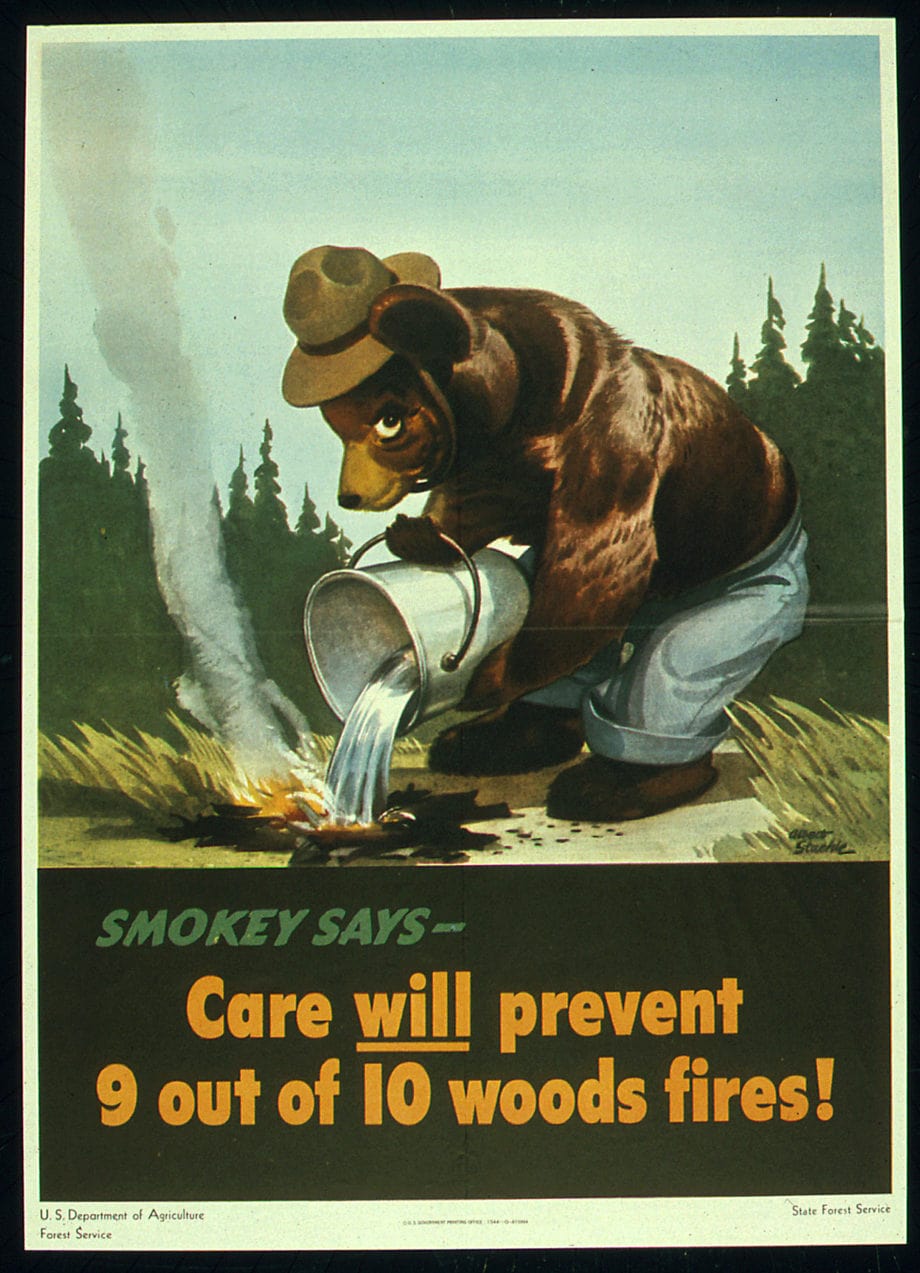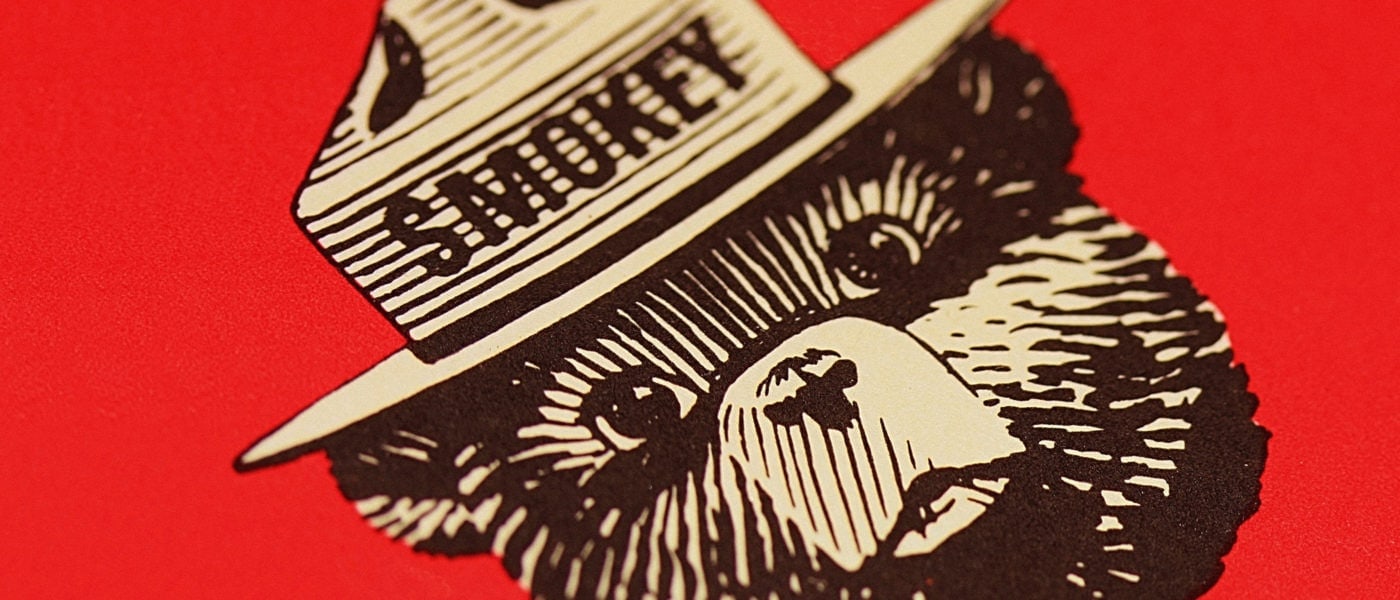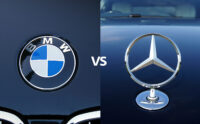Smokey (the) Bear
Smokey Bear’s ability to create a sense of community and emotional connection with children and adults alike has stood the test of time.
How a Mascot Helps Save the National Forests
As generations of Americans can easily remember, only YOU can prevent forest fires. For more than 70 years, Smokey Bear has been delivering that message—or one very similar to it—on posters, in radio ads, during in-person visits and, more recently, via his Twitter, Facebook and Instagram accounts.
The iconic bear—there’s even a new Oregon license plate design that bears his likeness—is the longest-running public service announcement in U.S. history. Despite the years that have passed, Smokey continues to be an extraordinarily recognizable representative for the U.S. Forest Service, one that offers a clear, important message. (And yes, his official name is Smokey Bear, despite a widespread misconception caused by a popular 1950s song that inserted a “the” in the middle for rhythmic purposes.)
In 1952, Steve Nelson and Jack Rollins wrote a popular song that added “the” between “Smokey” and “Bear” to maintain the song’s rhythm, but the bear’s name never officially changed.
Smokey Bear’s origins: A worthy successor to Bambi
When firefighters and other able-bodied men were deployed in World War II, U.S. communities had to find a new way to prevent and fight forest fires. With wood an essential part of the war effort, as it was critical to the building of boats, rifles and more, forest fire fighting was significant by extension. To drum up support and awareness, the Forest Service organized the Cooperative Forest Fire Prevention (CFFP) program and began creating posters and slogans, including “Forest Fires Aid the Enemy,” and “Our Carelessness, Their Secret Weapon.”

Not long thereafter, Walt Disney released the wildly popular Bambi film, the plot of which features a raging forest fire, and Disney allowed the CFFP program to use the film’s characters in its campaigns—but for one year only. As the year came to a close, the Forest Service decided on a new, powerful animal mascot: a bear.
The first poster depicted Smokey pouring a bucket of water on a campfire, and Smokey’s popularity quickly grew. Six years later, crews fighting a raging fire in the Capitan Mountains of New Mexico found a lone bear cub with badly burned paws and hind legs clinging to a charred tree. As news about the bear spread through the state, and ultimately the nation, the little cub became the living symbol of Smokey. He was soon on his way to a new home at the National Zoo in Washington, D.C., where he received numerous gifts of honey and so many letters he had to have his own zip code—20252.

Smokey resonated with audiences of all ages. In the decade after his creation, wildfires in the national forests were reduced dramatically despite increased visits. His message has stayed largely consistent through the decades, with his original catchphrase of “Smokey Says – Care Will Prevent 9 out of 10 Forest Fires” shifting in 1947 to “Remember… Only YOU Can Prevent Forest Fires.” A 2001 update changed it to “Only You Can Prevent Wildfires” to reflect the prevalence of wildfires in national areas other than forests, according to the Ad Council.
“Smokey is a classic example of a messenger who stayed on message,” four professors wrote in the book, “Brand Mascots: And Other Marketing Animals.” “In spite of many efforts to broaden Smokey’s message, the bear’s image was carefully controlled with concentrated efforts to reflect the appropriate personality and message.”
That controlled image didn’t come by accident – in 1953 the FBI was assigned the task of protecting the Smokey Bear brand image. Today, the bear and his message are recognized in the U.S. by 95 percent of adults and 77 percent of children, according to the Ad Council.
More than a story about a bear
“… By one standard, Smokey is nothing more than a wildly-successful figment of the collective imagination of 260 million Americans,” William Lawter wrote in his 1994 book, Smokey Bear 20252: A Biography.
Branding success is based on real connections, not mere spectacle or artifice. People are “hardwired for empathic connection and bonding over commonalities,” Felicia C. Sullivan wrote in Medium. And that connection translates into ROI. Consumers who are emotionally connected with a brand are 25 to 100 percent more valuable in terms of revenue and profitability than those who are highly satisfied with the brand, researchers have found.
“… By one standard, Smokey is nothing more than a wildly-successful figment of the collective imagination of 260 million Americans”

Where the Smokey brand excels is Smokey’s ability to connect with children and adults. Dressed in a ranger’s hat and blue jeans, with shovel in hand, he creates a sense of community with the millions of children who have enrolled in Smokey’s Jr. Forest Ranger program and the organizations that co-create him. He inspires conversation and encourages awareness, bringing people together around the shared goal of protecting the forest. Smokey “is for many people a comforting symbol of a promise that everything will be okay,” according to the U.S. Forest Service.
 2017-2018 campaign posters
2017-2018 campaign posters “Every interaction with your customers has the potential to reinforce or refute their belief that you ‘get’ them,” Rob Danna wrote in Forbes. “People want to evolve with a brand whose products and services help give their business or life meaning.”
For Smokey, who will turn 75 in August, that meaning is clear: “Only you can prevent wildfires” is more than just a slogan; it also gives voice to the shared desire on the part of his fans and followers to care for the world around them.


